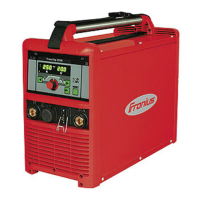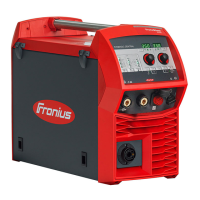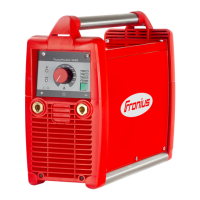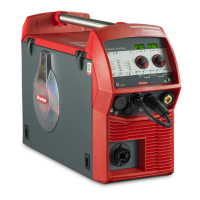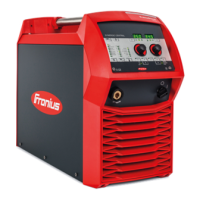63
EN
TIG pulsing The welding current set at the start of welding is not always ideal for the welding process
as a whole:
- if the amperage is too low, the base material will not melt sufficiently,
- if overheating occurs, the liquid weld pool may drip.
The TIG pulsing function (TIG welding with pulsing welding current) offers a remedy:
a low ground current I-G rises steeply to the significantly higher pulse current I1 and, de-
pending on the set dcY (duty cycle) time, drops back to the ground current I-G.
In TIG pulsing, small sections of the welding location melt quickly and then solidify again
quickly.
In manual applications using TIG pulsing, the welding wire is applied in the maximum cur-
rent phase (only possible in the low frequency range: 0.25 - 5 Hz). Higher pulse frequen-
cies are mainly used in automatic mode to stabilise the arc.
TIG pulsing is used for out-of-position welding of steel pipes or when welding thin sheets.
*) (1/F-P = time interval between two pulses)
Mode of operation of TIG pulsing when TIG DC welding is selected:
TIG pulsing - welding current curve
Legend:
I
S
Starting current F-P Pulse frequency *)
I
E
Final current dcY Duty cycle
t
up
Upslope I-G Ground current
t
Down
Downslope I
1
Main current
1/F-P
I
1
I-G
I
t
t
up
t
down
I
S
I
E
dcY
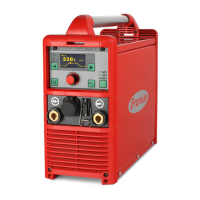
